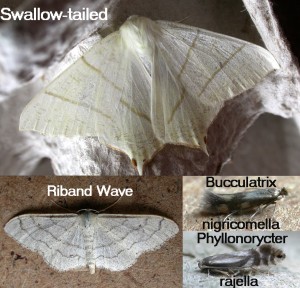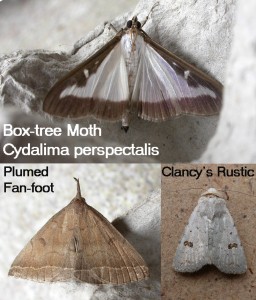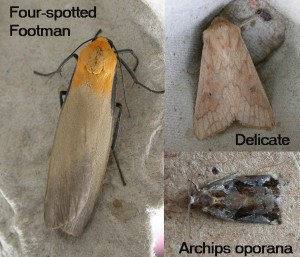Interesting year so far. June was exceptionally good and early for moths. We then saw a slow decline, as compared to the norm, through July and August and with the exception of a day or two in early September mid September’s weather was dire. Things started to buck up from 20th though and the end of September has brought some interesting catches.
Apart from trapping at home I visited The Patch on 4th and 28th, Tangham on 25th and Captain’s Wood on 26th. I have picked up most of the autumn species now with the exception of the Brindled Green and Green-brindled Crescent. Pink-barred Sallow, Black Rustic and Feathered Brindle seem to be having a good year. The milder weather that started around the 20th has brought out a number of late brood individuals. Whilst some might be prolonged late summer broods such as the Ruby Tiger others have been more interesting. Fresh specimens of Bucculatrix nigricomella, Anania coronata, Small Fan-footed Wave, Riband Wave, Swallow-tailed, Buff, Common and Rosy Footman, Yellow-tail, Buff Arches and Flame. Most excitingly for me was a male Archips oporana at Tangham on 25th. It is resident at a low frequency in our pine forests but I would be interested to know if it has previously be caught as a second brood.
The 28th brought me a couple of striking moths that were new for me. The rapidly spreading pest, the Box-tree Moth and 2 Plumed Fan-foot. On the 30th a Clancy’s Rustic turned up. Another first for me. It is difficult to know if these are immigrants or wanderers from locations where the moths are established in the UK. Rather like the Four-spotted Footman it may also be that they are resident. Four-spotted Footman has turned up at home (1), The Patch (2) and Tangham (3).
Other than the above most of the regular immigrants have visited my traps. The Scarce Bordered Straw has been especially prominent being found in most catches at home and usually more than one. Towards the end of September an invasion of the Delicate occurred in the UK. I have caught a few with a peak of 8 on 29th. A moth not normally listed as an immigrant is Hypsopygia glaucinalis. Whilst it is resident, there have been an unusually large number of them, coinciding with the underwings peak in late September. They have turned up at all the sites visited too.
A quick note on my other sites. The Patch on 4th turned up a pleasing 9 species of Phyllonorycter including P. rajella (photo) and 2 Roesterstammia erxlebella with 108 species. Captain’s Wood found me a Caloptilia populetorum, Stenoptilia zophodactylus, Orange Sallow and my first Feathered Thorn for the year.
Finally a note on our Bactra species. In my last post on them I suggested that the strongly bicolour variety of Bactra might be B. lacteana female specific, however I have now found one that was a female B. lancealana. It cannot therefore be used as a field ID character.




Not heard of any late records of the oporana Raymond but anything is possible this year. Certainly has been a strong showing of its relative podana here this year.
I think both Plumed fan-foot and Clancy’s rustic are resident in your area as Matthew has been noting them both too.